Longitudinal evolution of the transdiagnostic prodrome to severe mental disorders: a dynamic temporal network analysis informed by natural language processing and electronic health records
- PMID: 39843546
- PMCID: PMC12185326
- DOI: 10.1038/s41380-025-02896-3
Longitudinal evolution of the transdiagnostic prodrome to severe mental disorders: a dynamic temporal network analysis informed by natural language processing and electronic health records
Abstract
Modelling the prodrome to severe mental disorders (SMD), including unipolar mood disorders (UMD), bipolar mood disorders (BMD) and psychotic disorders (PSY), should consider both the evolution and interactions of symptoms and substance use (prodromal features) over time. Temporal network analysis can detect causal dependence between and within prodromal features by representing prodromal features as nodes, with their connections (edges) indicating the likelihood of one feature preceding the other. In SMD, node centrality could reveal insights into important prodromal features and potential intervention targets. Community analysis can identify commonly occurring feature groups to define SMD at-risk states. This retrospective (2-year) cohort study aimed to develop a global transdiagnostic SMD network of the temporal relationships between prodromal features and to examine within-group differences with sub-networks specific to UMD, BMD and PSY. Electronic health records (EHRs) from South London and Maudsley (SLaM) NHS Foundation Trust were included from 6462 individuals with SMD diagnoses (UMD:2066; BMD:740; PSY:3656). Validated natural language processing algorithms extracted the occurrence of 61 prodromal features every three months from two years to six months before SMD onset. Temporal networks of prodromal features were constructed using generalised vector autoregression panel analysis, adjusting for covariates. Edge weights (partial directed correlation coefficients, z) were reported in autocorrelative, unidirectional and bidirectional relationships. Centrality was calculated as the sum of (non-autoregressive) connections leaving (out-centrality, cout) or entering (in-centrality, cin) a node. The three sub-networks (UMD, BMD, PSY) were compared using permutation analysis, and community analysis was performed using Spinglass. The SMD network revealed strong autocorrelations (0.04 ≤ z ≤ 0.10), predominantly positive connections, and identified aggression (cout = 0.103) and tearfulness (cin = 0.134) as the most central features. Sub-networks for UMD, BMD, and PSY showed minimal differences, with 3.5% of edges differing between UMD and PSY, 0.8% between UMD and BMD, and 0.4% between BMD and PSY. Community analysis identified one positive psychotic community (delusional thinking-hallucinations-paranoia) and two behavioural communities (aggression-cannabis use-cocaine use-hostility, aggression-agitation-hostility) as the most common. This study represents the most extensive temporal network analysis conducted on the longitudinal interplay of SMD prodromal features. The findings provide further evidence to support transdiagnostic early detection services across SMD, refine assessments to detect individuals at risk and identify central features as potential intervention targets.
© 2025. The Author(s).
Conflict of interest statement
Competing interests: MA has been employed by F. Hoffmann-La Roche AG outside of the current study. RAM has received speaker/consultancy fees from Boehringer Ingelheim, Janssen, Karuna, Lundbeck, Newron, Otsuka, and Viatris, and co-directs a company that designs digital resources to support treatment of mental ill health. RP has participated in a Scientific Advisory Board for Boehringer Ingelheim, has received grant funding from Janssen, and has received consulting fees from Holmusk, Akrivia Health, Columbia Data Analytics, Clinilabs, Social Finance, Boehringer Ingelheim, Bristol Myers Squibb, Teva and Otsuka. PFP has received research funds or personal fees from Lundbeck, Angelini, Menarini, Sunovion, Boehringer Ingelheim, Mindstrong, Proxymm Science, outside the current study. Ethics approval: Permissions for the study were granted by the Oxfordshire Research Ethics Committee C; because the data set comprised deidentified data, informed consent was not required [18]. All methods were performed in accordance with relevant guidelines and regulations.
Figures
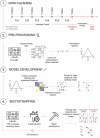
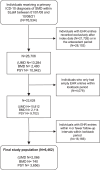
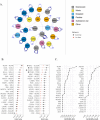
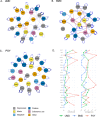
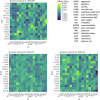
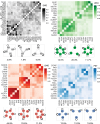
Similar articles
-
A transdiagnostic prodrome for severe mental disorders: an electronic health record study.Mol Psychiatry. 2024 Nov;29(11):3305-3315. doi: 10.1038/s41380-024-02533-5. Epub 2024 May 6. Mol Psychiatry. 2024. PMID: 38710907 Free PMC article.
-
Psychological therapies for post-traumatic stress disorder and comorbid substance use disorder.Cochrane Database Syst Rev. 2016 Apr 4;4(4):CD010204. doi: 10.1002/14651858.CD010204.pub2. Cochrane Database Syst Rev. 2016. PMID: 27040448 Free PMC article.
-
Psychosocial interventions for cannabis use disorder.Cochrane Database Syst Rev. 2016 May 5;2016(5):CD005336. doi: 10.1002/14651858.CD005336.pub4. Cochrane Database Syst Rev. 2016. PMID: 27149547 Free PMC article.
-
Early intervention for psychosis.Cochrane Database Syst Rev. 2006 Oct 18;(4):CD004718. doi: 10.1002/14651858.CD004718.pub2. Cochrane Database Syst Rev. 2006. Update in: Cochrane Database Syst Rev. 2011 Jun 15;(6):CD004718. doi: 10.1002/14651858.CD004718.pub3. PMID: 17054213 Updated.
-
Couple therapy for depression.Cochrane Database Syst Rev. 2018 Jun 8;6(6):CD004188. doi: 10.1002/14651858.CD004188.pub3. Cochrane Database Syst Rev. 2018. PMID: 29882960 Free PMC article.
References
-
- Oliver D, Arribas M, Perry BI, Whiting D, Blackman G, Krakowski K, et al. Using electronic health records to facilitate precision psychiatry. Biol Psychiatry. 2024;96:532–42. - PubMed
-
- Borsboom D, Deserno MK, Rhemtulla M, Epskamp S, Fried EI, McNally RJ, et al. Network analysis of multivariate data in psychological science. Nat Rev Methods Primers. 2021;1:1–18.
MeSH terms
Grants and funding
LinkOut - more resources
Full Text Sources
Medical

